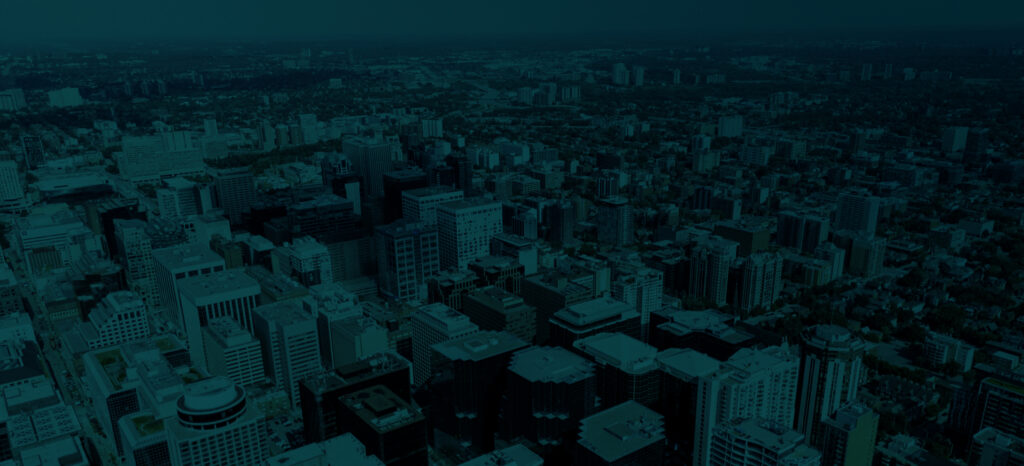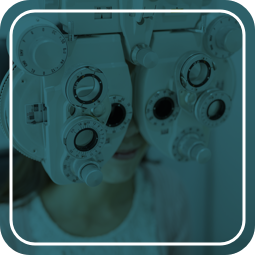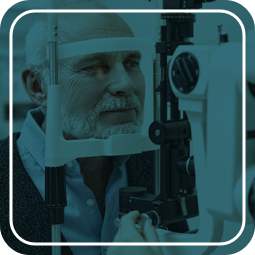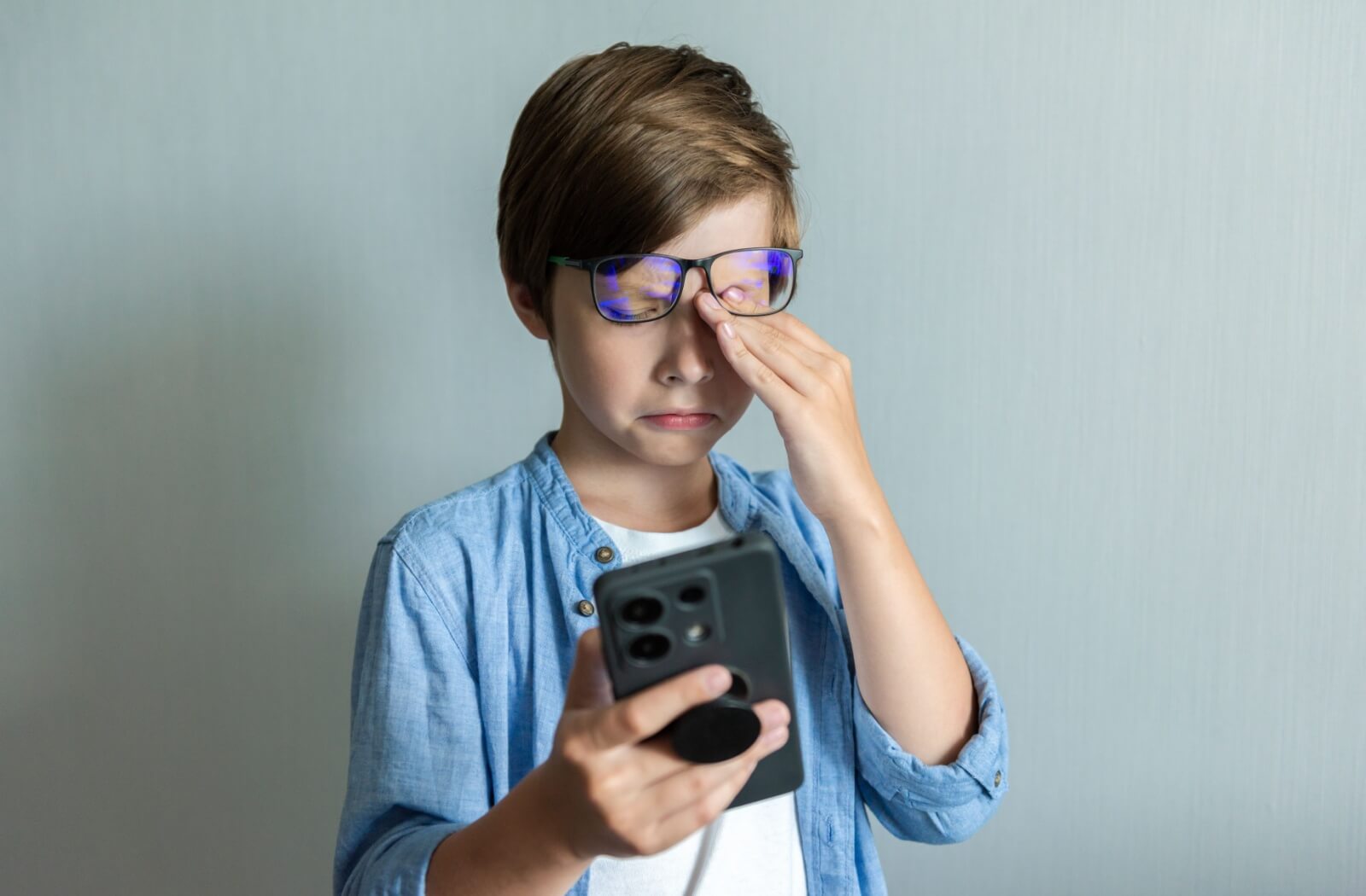Myopia, also known as nearsightedness, is a common eye condition that affects millions of people around the world. As the prevalence of myopia continues to rise, it’s more important than ever to find effective ways to control its progression.
The good news is that various myopia management methods can slow the progression of myopia and reduce the risk of serious sight-threatening complications.
From glasses and contact lenses to orthokeratology and atropine eye drops, many options are available to help manage myopia.
What Is Myopia?
Myopia, also known as nearsightedness, is a type of refractive error that occurs when the eye fails to focus light correctly on the retina. It’s so common that it’s estimated that by 2050, more than 50% of the world will be myopic.
With myopia, the shape of the cornea or lens prevents light from bending properly when looking far away, creating constant blurred vision. As the eye elongates, the level of myopia increases.
Symptoms of myopia can develop gradually or suddenly and often worsen during childhood and adolescence. Some common symptoms include:
- Blurry or hazy vision when looking at faraway objects
- Squinting to try and read
- Frequent headaches
- Poor vision in low light
Myopia in Children
Children often hide or downplay their vision issues, either because they don’t want to wear glasses or simply because they don’t have a proper frame of reference of what their vision should be.
Parents can monitor for signs that their child may be struggling with their vision, such as:
- Asking to sit at the front of the classroom
- Disinterest in sports that require long-distance vision
- Rubbing their eyes
- Moving closer to the TV
- Holding books or toys closer to their face
The most common form in children is “school-age myopia,” where nearsightedness develops from infancy into early adulthood.
What Causes Myopia to Develop?
We are still learning the underlying causes of myopia. Studies are finding that environmental and genetic factors play a role in myopia progression. For instance, a child with one parent being myopic increases the risk by three times. If both parents have myopia, that risk increases by six times.
Several environmental factors are being researched to understand their relation to myopia, including:
With the use of digital devices today, it’s understandable that these devices can hurt your eyes.
However, myopia was on the rise before the widespread use of technology. Instead, the early and extended introduction to digital devices likely has an indirect influence by promoting indoor activities that require close-up focus.
Preventing & Slowing the Progression of Myopia
The general recommendation to lower the risk of myopia in children is to spend at least 2 hours a day outdoors.
For children with myopia, outdoor activity won’t alter the rate of progression. Unfortunately, myopia is incurable once it’s present.
Children with myopia should limit the time of prolonged “near work” to help slow the condition’s progression. Since digital devices are a part of our everyday lives now, incorporating routine breaks for your eyes can be beneficial.
In addition, there are several other ways to control myopia and slow down its progression:
- Glasses or contacts
- Orthokeratology
- Atropine eye drops
Myopia Control Glasses & Contact Lenses
MiSight Contact Lenses
MiSight contact lenses are a type of soft contact lens specifically designed to slow myopia progression in children and teenagers. They’re worn during the day and are replaced daily.
Studies have shown that wearing MiSight contact lenses can slow myopia progression by up to 59%. They can be an excellent alternative for children and teenagers who are not suitable for orthokeratology or who would prefer not to undergo a surgical procedure.
MiYOSMART Lenses
MiYOSMART lenses are made of a special material that incorporates a unique “defocus” feature. The feature is designed to reduce the amount of clear focus the eye receives, which helps to slow down the rate of myopia progression.
They can be prescribed as a standalone treatment or as a complement to other methods, such as atropine eye drops.
Studies have shown that wearing MiYOSMART lenses can slow myopia progression by up to 60%. They are an alternative for children and teenagers who prefer not to wear contact lenses.
Orthokeratology
Orthokeratology, also known as “ortho-k,” is a method for controlling myopia that involves the use of specially designed contact lenses. The ortho-k contact lenses are made of a rigid gas permeable (RGP) material that holds its shape better than soft contact lenses.
The lenses are worn overnight while the wearer is sleeping, and they gently reshape the cornea to correct the refractive error that causes myopia. This can temporarily reduce or eliminate the need for glasses or daytime contact lenses.
Ortho-k is a temporary treatment that helps correct milder stages of myopia. The wearer must wear the contact lenses every night to maintain corrected vision. If the lenses aren’t worn, the cornea will return to its original shape, and myopia will return.
Atropine Eye Drops
Atropine eye drops are a medication used to dilate the pupils and temporarily paralyze the muscles responsible for near vision.
Low doses of atropine reduce the side effects of blurred vision while influencing the incoming light and its interaction within the eye, slowing the progression of myopia.
Even though the exact mechanisms remain elusive, studies continue to show that low doses of atropine eye drops can slow myopia progression in children by as much as 77%.
LASIK, PRK, SBK
LASIK is a procedure in which a laser is used to reshape the cornea to correct myopia. During the procedure, a small flap is created in the cornea using a laser, and then the laser reshapes the cornea by removing a small amount of tissue. The flap is replaced, and the cornea is allowed to heal. Recovery time is typically fast; most people can return to normal activities within a few days of the procedure.
It’s important to note that this option is typically not considered until later in myopia development. It is not used to slow down the progression of myopia, but this option can help treat those who already have myopia and no longer show signs of progression.
Take Control of Myopia Today
If you or your child are experiencing the symptoms of myopia, book an appointment with us! The Downtown Eye Care & The Contact Lens Department team can help find the best myopia control method for you and get you back to seeing clearly.















